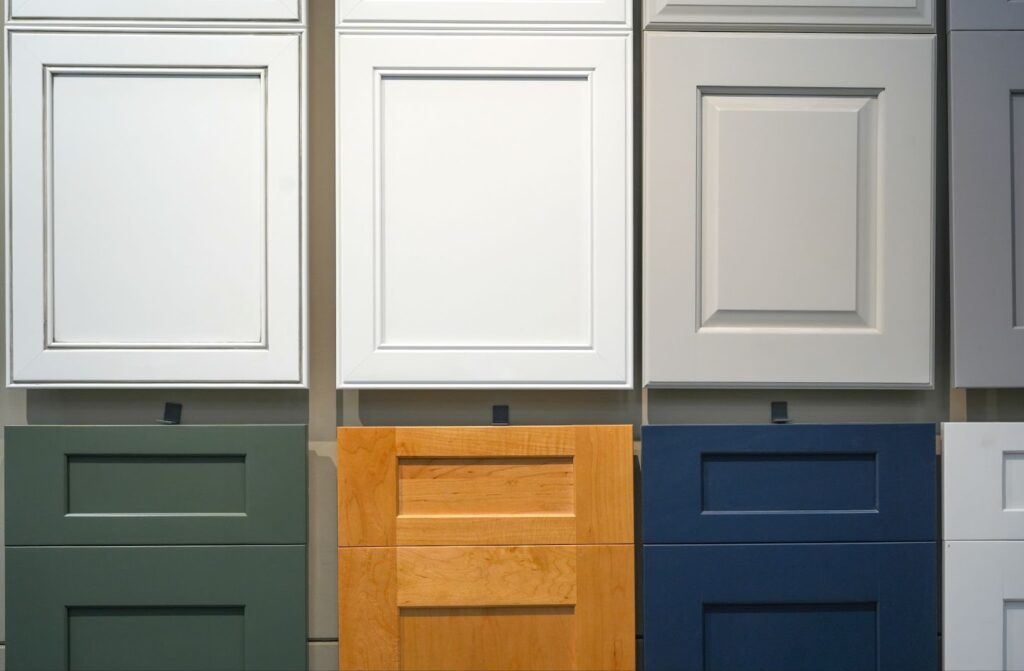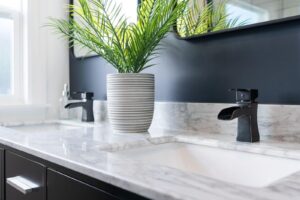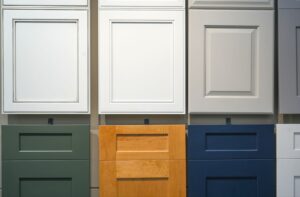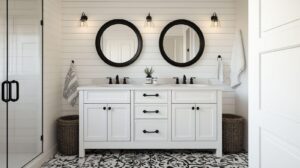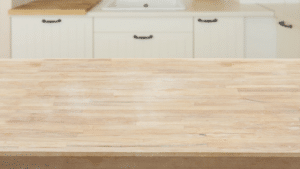Painted or stained cabinets will set the tone for your kitchen’s design. Beyond color, this choice influences durability, maintenance, and long-term value. The wood’s natural grain, the type of finish, and your style play a role in whether painting a cabinet or choosing a stain is the right move.
This guide will explain the differences in appearance, upkeep, cost, and design flexibility, helping you feel confident whether you’re updating your space or considering staining your cabinets for a refreshed look.
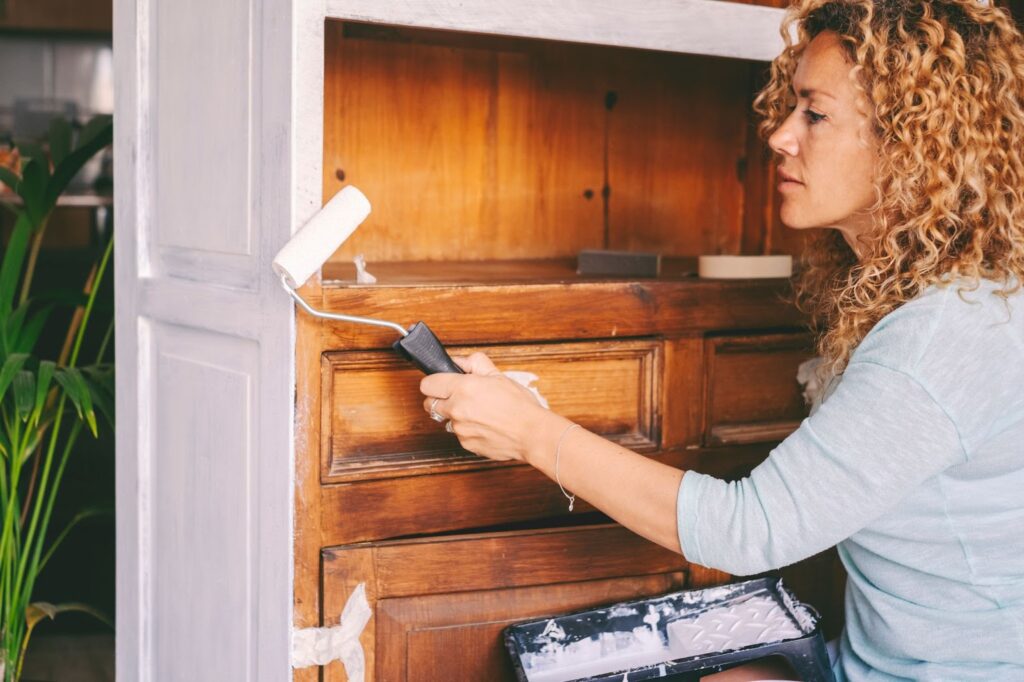
Appearance and aesthetics
The final look is the most noticeable difference between stained and painted cabinets. Paint provides endless color possibilities, from crisp whites to bold blues, making it a strong choice for homeowners who want more freedom to customize. With paint, you can match cabinetry to trending palettes or add a bold focal point without being limited by the wood’s natural tone.
Stain, on the other hand, highlights the beauty of wood grain. If you value natural texture, staining your cabinets enhances the richness of materials like oak, walnut, or cherry. Stained finishes lean traditional, but lighter stains are making their way into modern farmhouse and Scandinavian-inspired designs.
The choice often comes down to whether you prefer the sleek uniformity of paint or the character of visible wood grain.
For more ideas on how to customize your cabinets, check out our blog, “Top Kitchen Paint Colors for Your Remodel.”
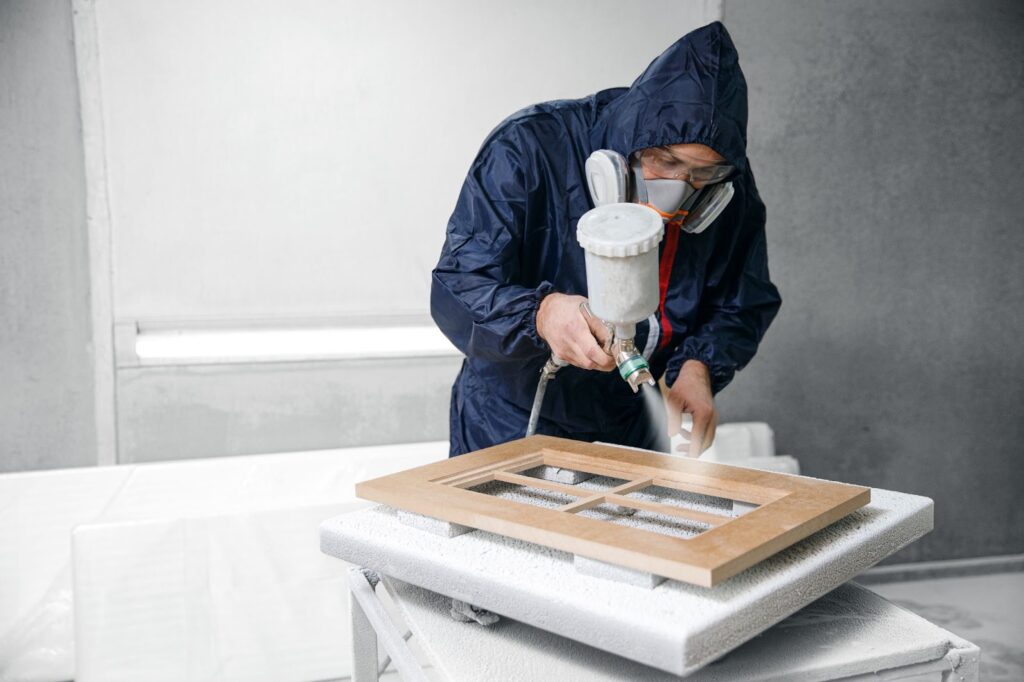
Durability and wear
Durability is another factor to consider. Stained cabinets tend to wear more gracefully over time. Small nicks or scratches often blend into the grain, making them less noticeable. To refresh trouble spots, apply a touch-up stain without refinishing the entire surface.
Painted cabinets show chips more easily, especially with darker or custom colors. When damage occurs, a painted cabinet typically requires more extensive repair to match the original finish. While durable paints and sealants minimize issues, kitchens with heavy use, like those with kids or pets, may wear more quickly.
Cleaning and maintenance
When it comes to upkeep, stain tends to be more forgiving. Stained cabinets naturally hide smudges, dust, and small scratches within the wood grain. Touch-ups are usually simple: a quick reapplication of stain or sealant is often enough to refresh worn areas. This is appealing for busy households where practicality matters.
Cabinets that are painted demand a little more care. Dust and grease are more noticeable on smooth, painted surfaces, especially with darker hues or glossy finishes. When damage does occur, painting a cabinet to repair chips or scratches is more time-consuming and requires a precise color match to avoid visible inconsistencies.
Cost implications and long-term value
Budget is often the deciding factor when comparing finishes.
In most cases, staining your cabinets is less expensive than painting. The process is straightforward and uses fewer materials, which helps keep costs down. For homeowners who love the natural look of wood and want a durable, affordable option, stain is often the smarter choice.
Painting usually comes with higher upfront costs. Between priming, multiple coats, and specialized finishes, the labor and material investment add up. However, painted cabinets update an older kitchen and increase resale value, especially in markets where bright, modern cabinetry is trending.
Whether you choose paint or stain, both finishes add value; it depends on whether you’re aiming for timeless warmth or sleek customization.
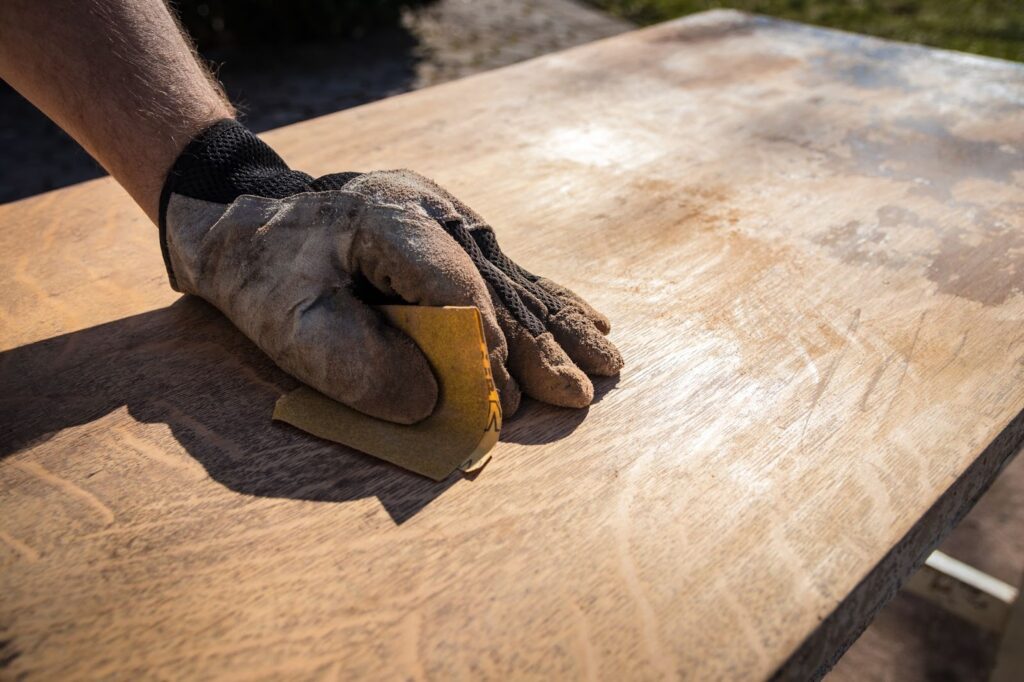
Application and refinishing
The application process is another point of distinction. Stain soaks into the wood, enhancing its natural texture and making the grain the star of the show. Over time, stained cabinets are easier to refresh with spot treatments or new layers of sealant. That makes them an appealing long-term choice if you want a finish that’s easy to maintain.
Paint requires more preparation, often starting with sanding, priming, and multiple coats for full coverage. Refinishing cabinets is more labor-intensive — painting a cabinet to cover wear or change colors typically means redoing the entire surface. This process offers more freedom for design updates, but it requires more commitment and cost when compared to simply staining your cabinets for a natural refresh.
If you want to paint over previously stained cabinets, HGTV recommends using chalk, milk, acrylic, mineral, or latex paint.
Material compatibility
The material of your cabinets plays a big role in whether stain or paint is the better choice. Solid woods such as oak, maple, cherry, and walnut are ideal for staining due to their natural grain, adding depth and character when enhanced with a finish. If you want the beauty of natural wood to shine, stained cabinets highlight the texture and warmth of these materials.
Paint, however, covers materials that don’t have a strong grain, such as MDF or engineered woods. If you’re considering painting a cabinet not made from solid wood, paint provides a smoother and more uniform finish than stain could.
Knowing the materials of your cabinets will help determine whether staining or painting will create the best results.
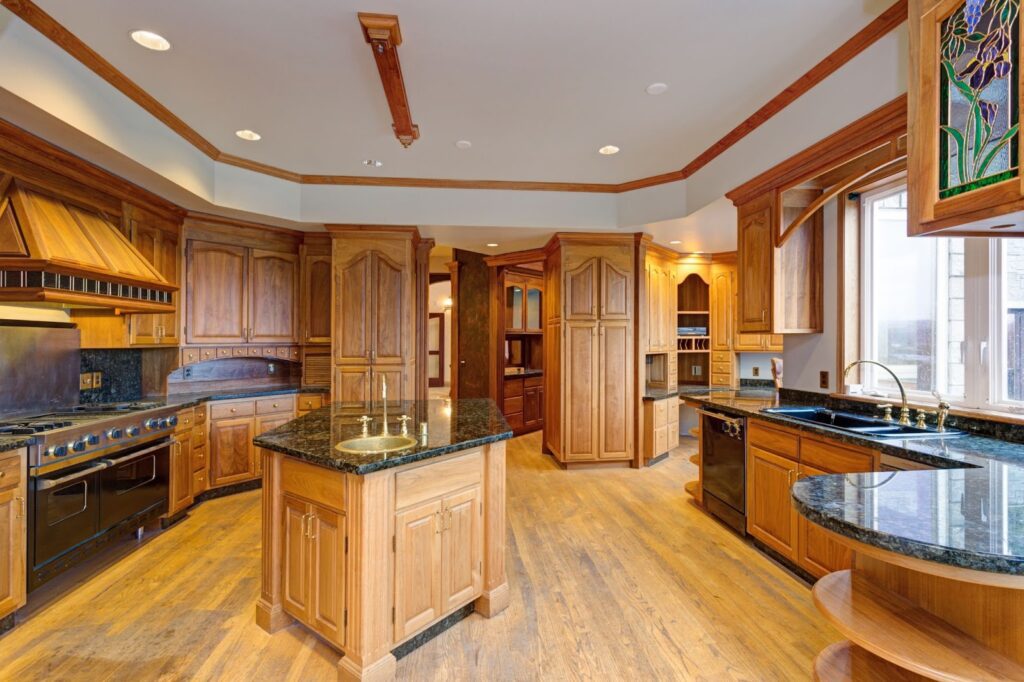
Current design trends and inspiration
Trends in kitchen design often influence how homeowners lean toward stain or paint. Right now, light and natural stained cabinets are popular in modern farmhouse and Scandinavian kitchens, offering a subtle, organic look. Deeper stains, like espresso or walnut, remain timeless for traditional homes.
On the other side, painted cabinets give you nearly limitless design freedom.
Crisp white continues to dominate for its fresh, bright effect, while bold shades like navy or forest green are increasingly common in custom kitchens. HGTV shares that two-tone kitchen cabinets — such as painted uppers paired with stained cabinets below — allow you to mix finishes and are popular for a unique, contemporary style.
Exploring fresh color trends or staining your cabinets to highlight wood creates stunning results.
Environmental and health considerations
Finishes carry environmental and health factors worth weighing. Many stains are available in low-VOC formulas, making them less harsh and safer for families and indoor air quality. Natural finishes are sometimes more eco-friendly than heavy-duty paints.
Paints have made strides as well, with water-based options that minimize odors and chemicals. Still, painting a cabinet generally involves more layers of product, increasing its overall environmental footprint.
For homeowners mindful of sustainability, choosing stains or eco-conscious paints ensures you achieve a beautiful look while making a responsible choice for your home.
Get expert support from Mountain States Kitchen and Bath
At Mountain States Kitchen and Bath, we help homeowners make choices that balance beauty, function, and budget. Whether you’re considering the warmth of stained cabinets or the crisp, modern look that comes with painting a cabinet, our team can guide you through the process.From selecting finishes to seeing samples in person, we’ll help you design a kitchen that reflects your lifestyle. If you’re ready to explore cabinet options, contact us today to get your dream cabinets.

